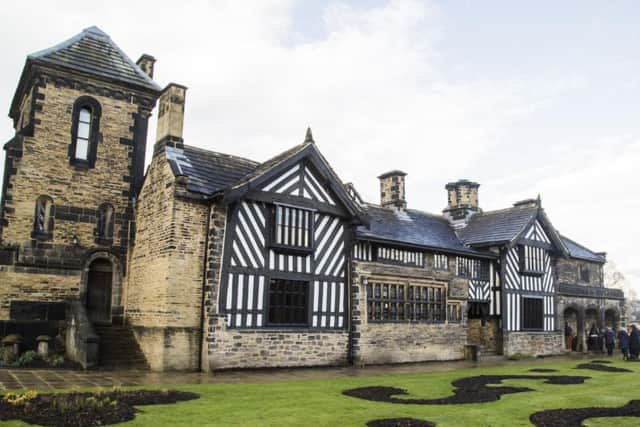Gentleman Jack: The tragic fate of Anne Lister's 'wife' Ann Walker


Halifax businesswoman Anne Lister - whose incredible life story is told in new BBC period drama Gentleman Jack - found love and companionship with her lesbian partner Ann Walker, a fellow heiress from the town's mill-owning middle class.
The 19 Yorkshire locations that appear in Gentleman JackThe pair considered themselves married after taking Holy Communion together in Holy Trinity Church, Goodramgate, in York - now recognised as the site of Britain's first lesbian nuptials, although same-sex unions were illegal at the time and the ceremony was not official.
Advertisement
Hide AdAdvertisement
Hide AdInside Shibden Hall - Anne Lister's ancestral home that you can visitAnne and Ann - played by Suranne Jones and Sophie Rundle in the TV adaptation - met in 1832, after Lister, whose family owned the Shibden Hall estate, had already had sexual relationships with several other women. They 'married' two years later and Ann Walker moved into Shibden.


Ann's family were wealthy in their own right - the Walkers owned a worsted mill and Crow Nest, itself a grand mansion. Ann's childhood home was nearby Cliffe Hill, in the village of Lightcliffe. She was born in 1803 and was the daughter of John Walker and his wife Mary Edwards. John inherited from his unmarried elder brother when Ann was just six, and the family moved into Crow Nest. John's unmarried sisters, Ann's aunts, remained at Cliffe Hill.
Ann's brother William had died shortly after birth, but she had two elder sisters, Mary and Elizabeth, and a younger brother, John Junior - the heir.
By 1823, when Ann was just 19, her sister Mary and her parents had both died. John inherited the estate, while Ann and her remaining sister Elizabeth were left with a comfortable allowance.
Advertisement
Hide AdAdvertisement
Hide AdIn 1830, further tragedy struck when newly-married John died on his honeymoon in Italy at the age of just 25. Although his wife was pregnant, her son was stillborn and John had not made a will, meaning no provision was made for his widow. Ann and her sister Elizabeth - who was married - became very wealthy co-heiresses.
Perhaps the deaths of most of her close family members had liberated Ann to defy convention and pursue her relationship with Anne Lister. The couple used the Walker fortune to renovate Shibden Hall. They visited the Pyrenees together - Anne Lister was an accomplished mountaineer at a time when few women were able to take part in adventurous sports.
However, many historians believe Anne 'married' Ann for cynical reasons - namely to access her money.
In 1840, they were travelling together in what is now Georgia when Anne fell ill and died from a fever at the age of 49. Her body was brought home and buried in Halifax Minster, although the grave was later covered by a floor and not re-discovered until 2010.
Advertisement
Hide AdAdvertisement
Hide AdAnne had left Shibden to her cousins, but Ann was given a life interest in the estate. However, the Walker family had Ann declared insane, and she spent some time in an asylum. She was unable to make a will of her own due to her mental state. She died in 1854 at Cliffe Hill, aged 51.
Ann was buried in St Matthew's Church, Lightcliffe, but her grave beneath the pulpit was destroyed when the old church was demolished and a new one built in its place. The church has placed a memorial stone on the spot where she lies.
Anne Lister's risque diaries, written in code, were hidden behind a wall panel at Shibden and not discovered until the 1930s, when an ancestor managed to decipher the code. However, he hid them once again, and they were not found again until the 1980s.